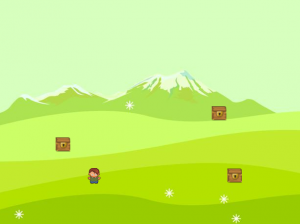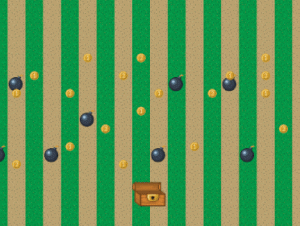How Games Can Change the World: Abu Dhabi
And how did the Abu Dhabi trip go?
It went great, we had a lot of fun. And we worked hard – we had only one day off!
We went to work with public and private school teachers in Abu Dhabi. The work we were doing was part of a bigger mission of the Education Council there, to become independent from the oil industry as a country – to diversify in areas of technology and manufacturing. So for the first part of the workshop, we worked with teachers from various backgrounds, some technology and others not, to show them how the Activate curriculum works and how to implement it in the fall.
These teachers were our students for the first week and by the end of it they were able to make their own video games. The second week we had a group of 40 middle-school students come learn how to make video games, and the teachers observed the process. In the third week, the teachers conducted the workshop for another group of student.
How many students did you take from AMT?
There grad students: Scott Peterman, Lien Tran, and Liza Stark, plus one Parsons BFA recent graduate who did video documentation for us.
Was it a competitive process for students to get this all-expenses-paid trip?
Yes, it was hard to choose. we had to build a team with mixed talent – for example we needed to make changes to the Activate site. And the team also had to be really interested in games and learning. 
How can games be part of solutions to environmental problems?
That’s a question like, how do we see something like information design leading to potential solutions. I think that games are the entertainment medium of systems – in order to make games you need to learn how to design a system that has inputs, outputs, interrelated parts, feedback loops. Games are different from information design, which represents a system – games are a system.
What’s interesting about games and what we’re seeing as their popularity increases, and distribution opportunities on iPhones and Facebook create a more diverse range of games, we’re seeing what a colleague of mine in a game collective is calling the “ludic century” – ludic meaning playful.
 If you can play with a system you can also understand how it works, and make changes within that system. You can “game” the system so to speak. And big problems are systemic. Things like recycling, for example, are systemic. So in Activate we say, okay we can play with systems but can also design our own. And that helps you understand systems better – and even discover some things about how the real world is designed.
If you can play with a system you can also understand how it works, and make changes within that system. You can “game” the system so to speak. And big problems are systemic. Things like recycling, for example, are systemic. So in Activate we say, okay we can play with systems but can also design our own. And that helps you understand systems better – and even discover some things about how the real world is designed.In Abu Dhabi we looked at solar energy as a system – they broke it down into its parts and made games about it. But if a game totally replicates a system, it’s boring. A game called Solar Balls, which you’ll find on the Activate site – one of our lessons is how to make this – has the elements of a solar panel, clouds and sunrays. It simply represents the system, but also is fun to play, relying on a mechanic called “breakup.”
What were some exciting moments during the program?
The program is unconventional in that we mixed genders in the classroom – this is not typical for Abu Dhabi. there was plenty of competition, in a playful spirit – making games leads to playing games! – between the boys and girls. It was cool to watch.
Many times they were teaching us how to do things and solving problems, technological issues, that we ourselves couldn’t solve. They really caught on quickly.
What was Abu Dhabi like?
It was hot! 110 degrees with a high humidity index. But it’s a wonderful place – super high-tech. Very wealthy. But also it’s a country that takes education seriously and invest a lot in the ed system – we can learn a lot from this in the US. It was super inspiring.
We had dinner with the heads of the education system out there – they were really interested in the idea of teaching kids how to make video games as a viable way to learn real stuff. They were very progressive in that way.
What do you like best about teaching in the AMT program?
Interview conducted and written by Rachel Signer: http://rachelsigner.com. Interview has been edited and condensed.


